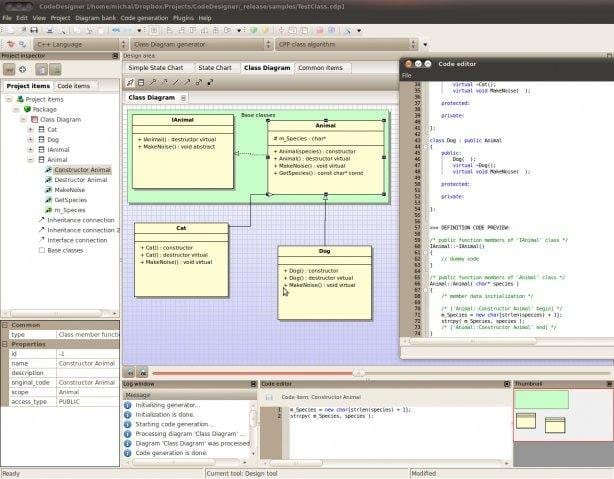CodeDesigner is Rapid Application Development Tool with UML Support
Table of Content
CodeDesigner is a highly versatile, free and open-source Rapid Application Development (RAD) tool that empowers users to effortlessly create a wide range of detailed diagrams that accurately depict the structure and logic of their applications. These diagrams include class diagrams, state charts, and many more.
With CodeDesigner, users can seamlessly transform their diagrams into production-ready source code, saving valuable time and effort in the development process.
Whether you are a seasoned developer or just starting out, CodeDesigner provides an intuitive and efficient solution for all your diagramming and code generation needs.
Features
- Code generation from UML class diagrams and state charts
- Several optimizing code generation algorithms
- Supports C, C++ and Python output language
- Available for MS Windows, Linux and Mac OS X
- Reverse source code engineering (full round-trip code engineering supported)
- Aimed to embedded software design
- Supports both blocking and non-blocking state charts
Screenshots

Operating Systems
- Windows
- macOS
- Linux
License
Free app
Resources and Downloads













